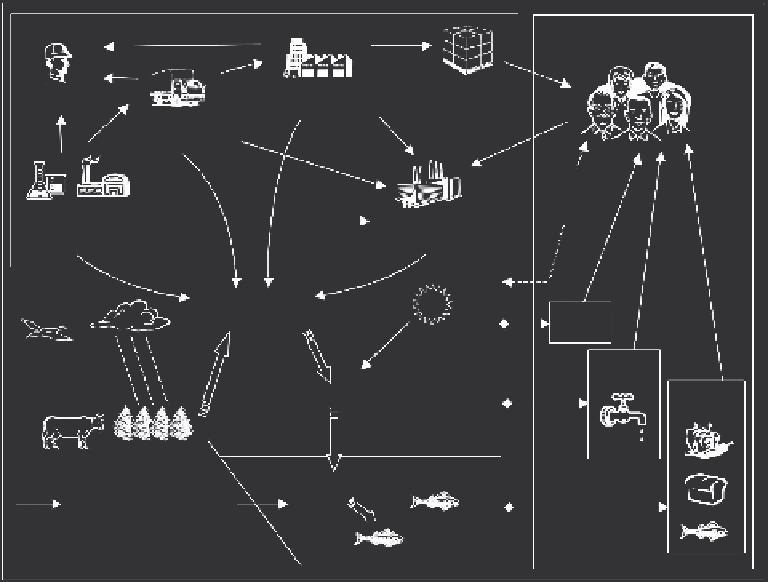Environmental Engineering Reference
In-Depth Information
CONSUMER
PRODUCT
STORAGE
discharge/leakage
WORKERS
TRANSPORT
discharge/leakage
Release of fixed
nanoparticles/
nanotubes during
product lifecycle?
PRODUCTION
Lab/Factory
discharge/leakage
WASTE
discharge/leakage
Transport/Diffusion?
AIR
WATER
Transformation/Degradation?
DIET
Potential use of nanoparticles
in environmental applications
(eg remediation of polluted
groundwater)
Transport/Diffusion?
Figure 8.1
Some possible exposure routes for nanoscale materials based on current and
potential future applications. (Reproduced from (RS/RAEng 2004) with permission from the
Royal Society.)
In an occupational context, exposure to nanomaterials can occur for workers at
all phases of material life cycle. During the development of a new material, it is
probable that material will be produced under tightly controlled conditions, in typi-
cally very small quantities. Nevertheless, the possibility of release into the work-
place air exists if appropriate measures for handling are not implemented.
Accidental releases due to spills and accidents are also a possibility. Once the mate-
rial moves into commercial production, exposures can potentially occur during
synthesis of the material or in downstream activities such as recovery, packaging,
transport, and storage. In these circumstances, the quantities of materials being
handled will typically be much larger.
Depending on the specifi c properties of the new material, it may be incorporated
subsequently in a range of other products or may be used in other processes as a
feedstock material. Again, these scenarios have the potential to result in exposure
to workers involved in them. Nanomaterials may also be incorporated, for example,
into a composite material which may be subsequently re-engineered or reprocessed
(e.g. by cutting, sawing or fi nishing). Again in these circumstances, the potential
for exposure exists. Finally, end-of-life scenarios where the material is disposed of,

Search WWH ::

Custom Search